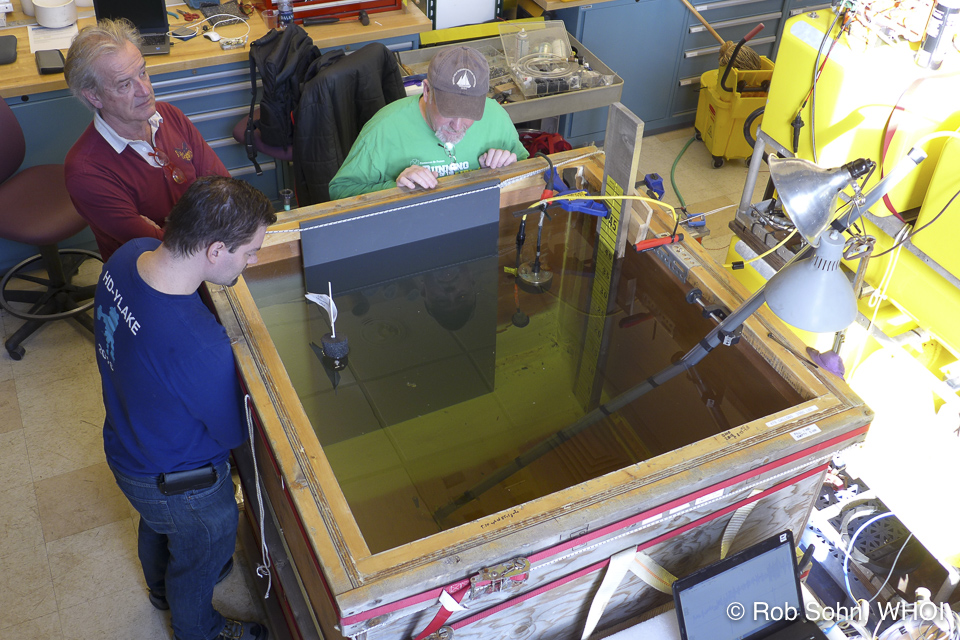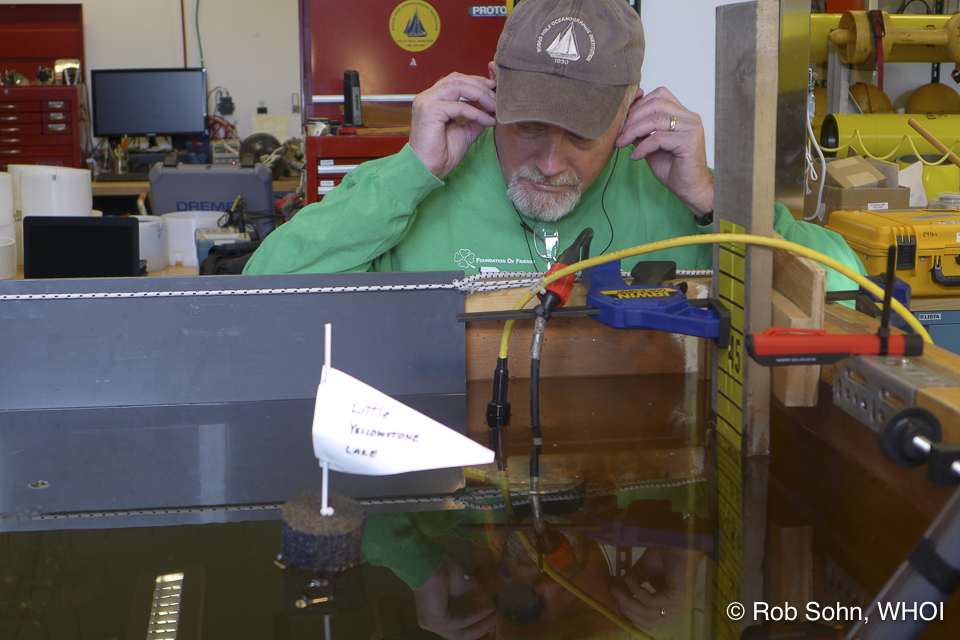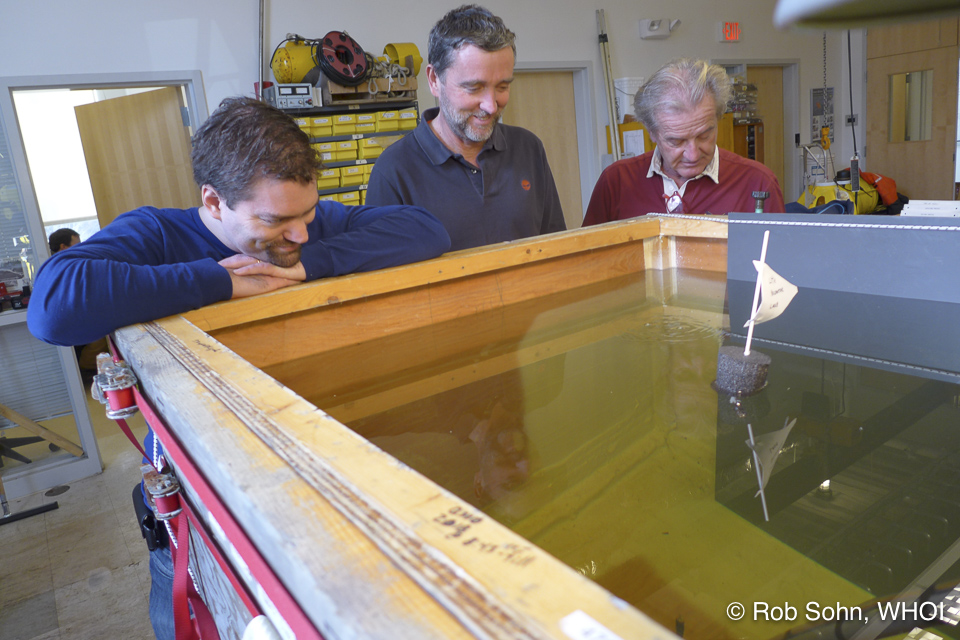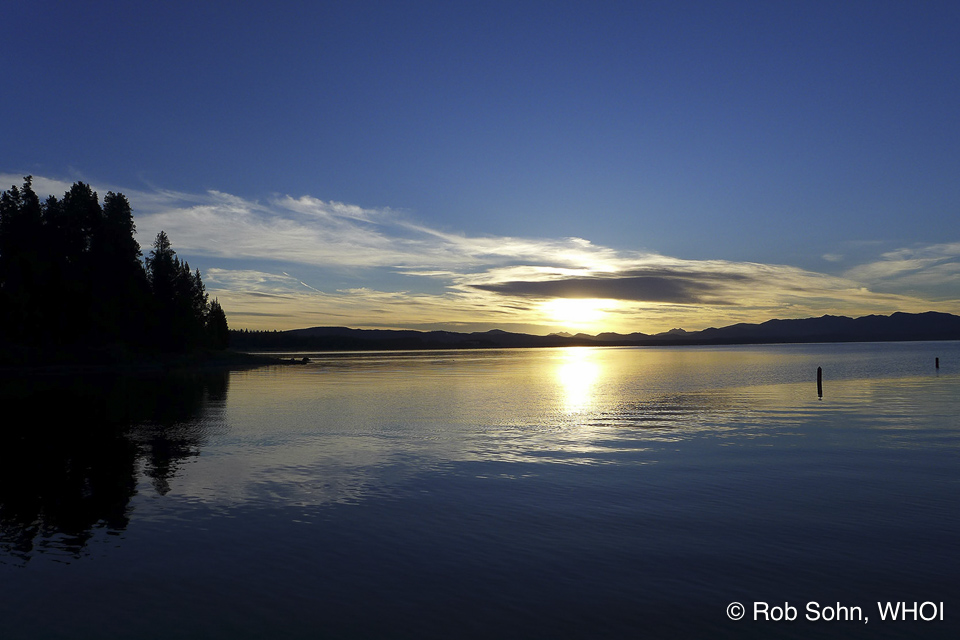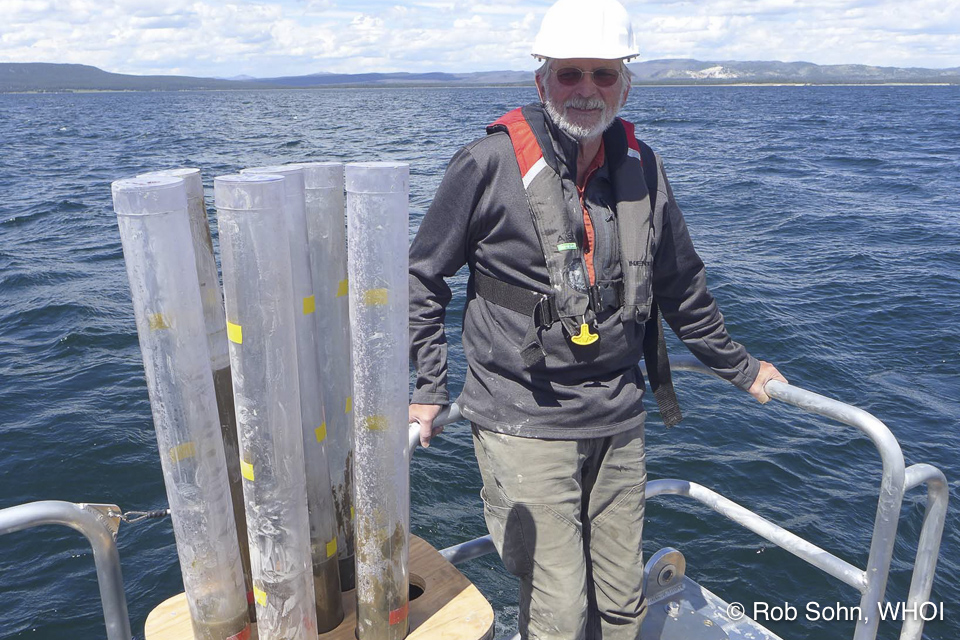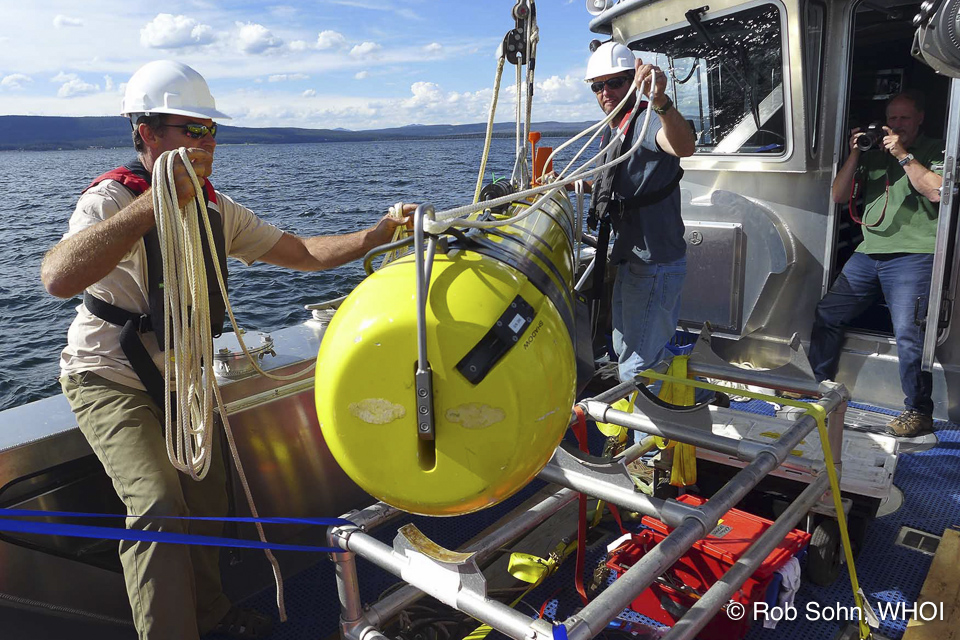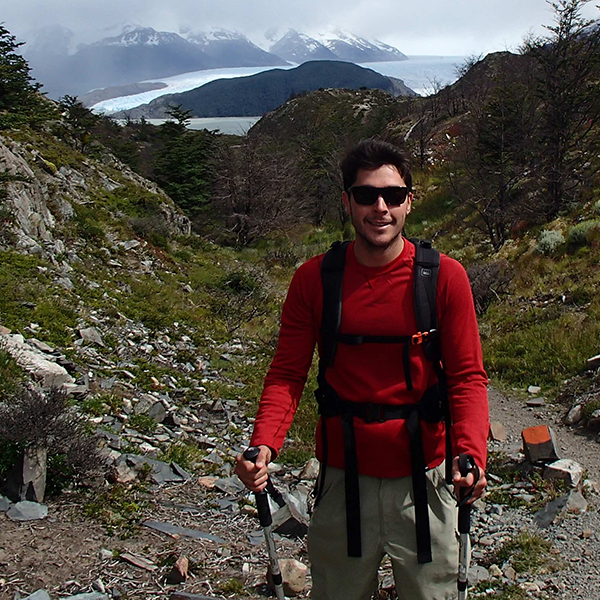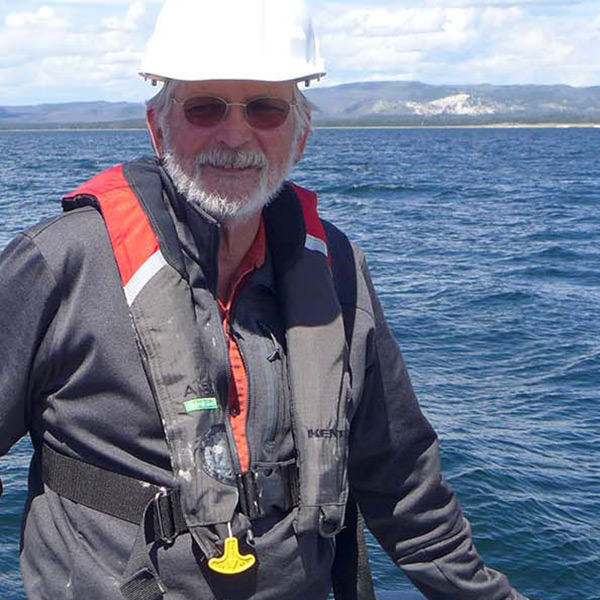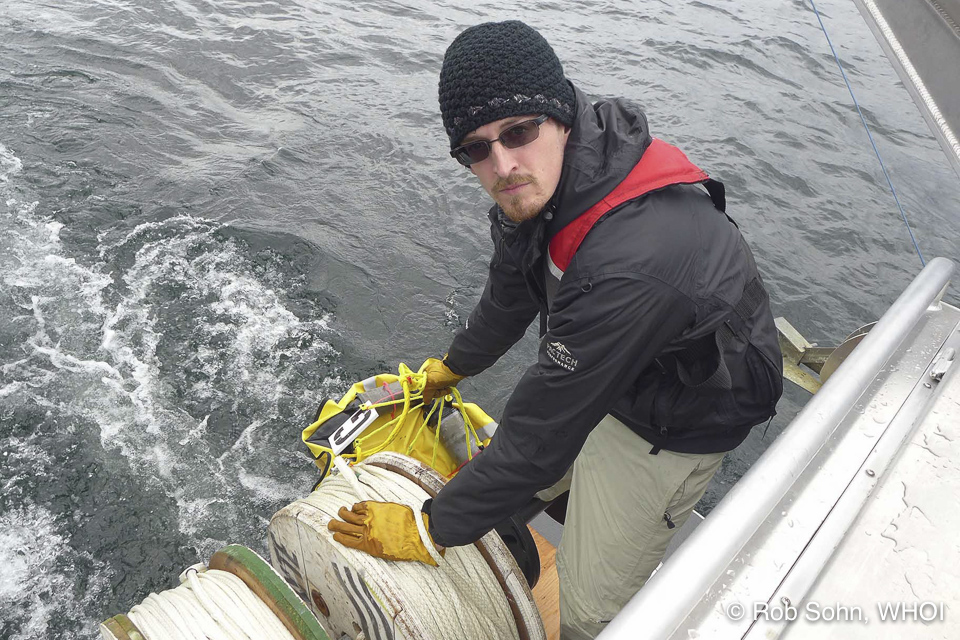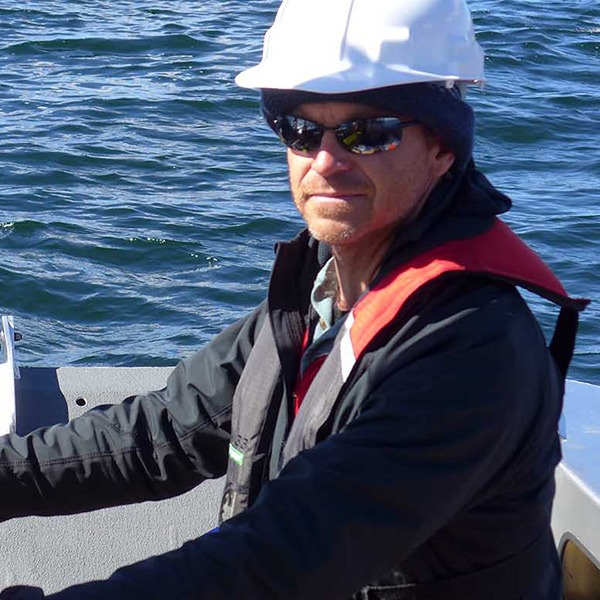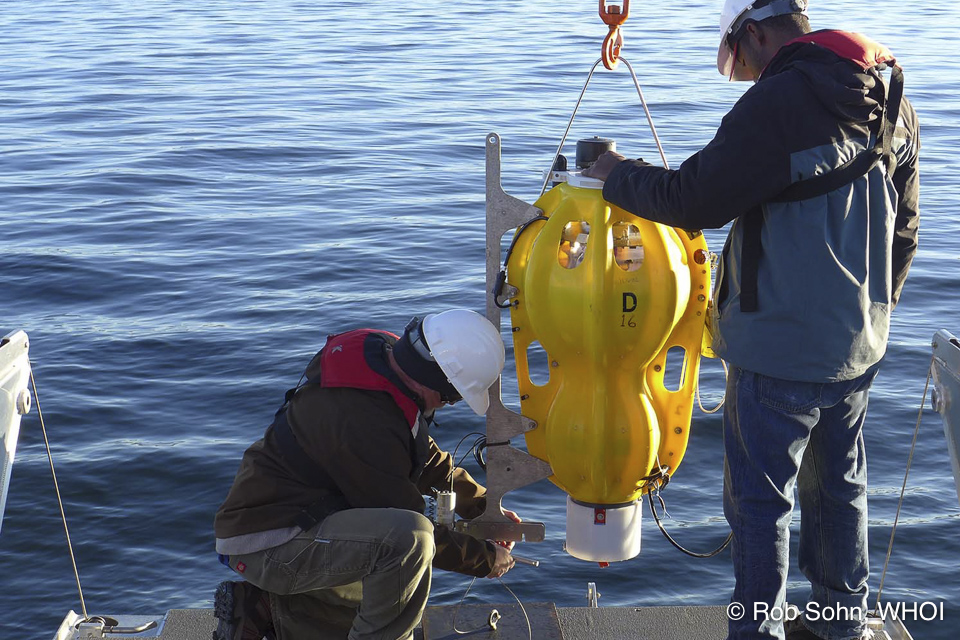The hydrothermal fluids venting from the lake floor contain gases that escaped from the magmatic system under the Park. These gases, which include things like carbon dioxide and sulphur dioxide, make bubbles that rise up through the lake before popping on the lake surface. On a calm morning it is easy to see them if you are on a boat right above the vent field. These bubbles are initially highly pressurized because they are under about 300 ft of water, and the bubble walls vibrate at rates of several thousand cycles per second. These vibrations are too fast to be detected by our seismometers, but we are building a custom hydrophone (underwater microphone) unit with collaborators from IS Terre in France that will allow us to monitor acoustic signals from bubbles during the seismometer deployments. We call this instrument, The Bubblephone. Photos and story by Rob Sohn, WHOI.
